The Captain’s crew are on the hunt for the enigmatic swordfish — charging out past the fire-breathing oil rigs of Bass Strait aboard a Bass Strait Offshore 30, which has a certain synchronicity to it if you give a rat’s about such things. This rig has a huge wheelhouse, which looks like coming in handy because we’re on the cusp of a rugged Victorian winter and heading more than 75 miles (139km) offshore. Ladies and gentleman, start your pie warmers.
SWORDBOAT CREW
TONY KEMNA
Skipper Far Out II
Has fished for swordfish for 25 years and landed seven. He describes swordfishing as, “ Jurassic Park of the fishing world and that’s why there’s a big buzz. Everybody wants to catch one”.
WAYNE BASTIN
Deckie Far Out II
A farmer from the LaTrobe region, Wayne stitches squid baits like he prepares a lamb roast — but his baits get the sword bite. We reckon Wayne’s hat has killed as many fish as he has.
NICK WOOD
The Captain’s Crew
Viewed the swordfishing adventure swaying behind the lens of his salt-soaked camera, earning his surf ‘n’ turf at the Kalimna Bar and Bistro when it was all over.
JACK MURPHY
The Captain’s Crew &
sword anglerSnapped the stills and also snapped up the Shimano 80W when the line started peeling off. Jack says, “the most spectacular fish I’ve ever caught — difficult to hook and unpredictable to fight. Heart-in-mouth the whole time.”
TRAVIS GODFREDSON
The Captain’s Crew
At home in Bass Strait’s windswept waters, he spent as much time admiring the lines on the Bass Strait Offshore 30 as everyone else did admiring Jack’s swordfish
Swordfish haven’t always been on our bucket list. For decades, we thought they were only caught by accident on full-moon nights while cubing for sharks and tuna. But the game has changed. A few years ago, a posse of committed anglers shone a light on Australian swordfishing. Venturing out from ports on the south-east Victorian coast, they discovered swords were very catchable indeed. At places like Lakes Entrance, Marlo and Mallacoota, a few empty trailers sat solemnly in car parks while their owners navigated the canyons below Bass Strait. In the middle of the day, while most of us were at work, they discovered daytime swordfish. The key to their success was dropping carefully rigged baits (usually arrow squid) into the fishie canyons that wind their way between Tasmania and Victoria. Joel Ryan, one of the early adopters of daytime sword fishing, describes the country as, “Mount Everest, but upside down.”
These days, everyone wants to catch a sword. The thought of doing battle with a fish with a flat serrated bill that measures a third of its length — and eyes as big as cricket balls — is enough to make any old salt dust off the Tiagras. But before you hitch up the Caribbean with the thirsty old Mercs, you should put some thought into the rig on which you ride into battle. Because it’s not just another ride to the shelf. These fish aren’t easy to find. You could easily travel more than 200 miles (370km) a day to catch one — if you’re lucky. You’ll need a seriously seaworthy vessel, with the efficiency of a Tesla and the range of a supertanker. And you’d better be familiar with your top-of-the-range sounder, because it needs to spot a pilchard in 500m of water.
BASS STRAIT VS, ER, BASS STRAIT
What could be better than a salt-shaking Formula 233 for a big offshore charge? A bigger 233, naturally! This was our thinking when we contacted Tony Kemna from Far Out Fishing Charters. He skippers a Bass Strait Offshore 30 known as Far Out II. In essence, the boat is a scale model Formula blown out to 30ft (9m) with a 3m beam. It’s an imposing sight at the ramp, dwarfing every trailer boat in town.
“We’re coming to Lakes Entrance to catch a sword and we don’t care how hard she’s blowing!” we hollered down the phone to Tony.
“My boat and I are up to it, but I don’t know if you blokes are”, was his response. Despite Tony’s trepidation, we threw the OtterBox esky in the back of the Cruiser — alongside some sharp filleting knives and a few extra pairs of footy socks — and hit the highway south.
The 30-footer is Tony’s second Bass Strait boat. He skippered a 24ft version for 12 years and loved it, but it only had a certified range of 30 nautical miles. Tony wanted a rig that could venture further offshore — to fish commercially and service the oil rigs off Lakes that occasionally need parts shipped out in a hurry. So he did his Master 5 and drew up a checklist for his dream boat. To reach the rigs, his boat had to be in 2B survey. Back then, swordfishing wasn’t on Tony’s agenda, but the happy consequence of a 2B survey is that he can legitimately charter-fish the sword grounds. (This remains a point of contention for other swordfishing charter boats operating in 2C survey, which limits them to a range of 30nm offshore.)
SURVEY THE BATTLEFIELD
Are you a bit confused about the survey classes for commercially operating boats? Here’s a cheat sheet courtesy of the Australian Maritime Safety Authority (AMSA). Check out amsa.gov.au for more info. For example, a passenger vessel carrying 30 people and operating out to 15 nautical miles has a service category of 1C.
VOLVO POWER PLANT
Far Out II is fitted with a diesel-powered Volvo Penta D6-370HP stern-drive with a duoprop leg. This is not a tractor engine dressed up for boating applications. The purpose built 5.5L engine features six cylinders, common-rail fuel injection and double overhead camshafts, with a turbo and supercharger to boot. The turbo is exhaust driven and the supercharger is belt driven, kicking in when the hammers go down. “It’s not as quick as the old Bass Strait 24, but it rides better and is more comfortable”, Tony says. Initially he was concerned with the top speed, but with some propeller refinements, he’s now pulling 35 knots. Ideal cruising speed is around 25. “Sure, it might take me 15 minutes longer to get to the hot bite, but chances are I’ll have the kettle on and you’ll be sipping tea or coffee and munching on scones with cream and jam by the time we get there,” he says.
Far Out II won’t win many offshore races, but its economy has certainly won Tony over. On our 110km run out to Anemone Canyon we used 240L for the day, the same amount of fuel used by our sister ship — an Edencraft Formula 233 — noting that the 233 is 1.5m shorter, half a metre narrower and half as heavy as its larger sister.
One thing Tony stipulated with the builder, Greg Salmond, was that he wanted a flat floor. He’s not a fan of a giant box in the middle of the fishing zone. So Greg got to work creating a large flat surface to enclose the compact Volvo donk. The end result was a self-draining deck. It’s great for washing off the ocean when backing up on swords — notorious for disorderly conduct on the surface.
“Swords can go from one side of the boat to the other in seconds,” Tony noted. “That’s where the duoprops on the stern-drives come into play — they grab and throw the water.” Then he gave The Captain’s crew an ominous warning: “If we do hook up, hold on tight. These fish will charge the leg from 100m away. When I want to get somewhere to evade it, we’re gonna get there fast.” Tony reckons the 9m stern-drive model is far more responsive to the throttle than his old 7m boat with twin outboards. Despite being a diesel inboard, noise-level and vibrations are surprisingly low. Nevertheless, Jack’s beard was now twitching nervously.
The big Straiter does everything a 30ft charter boat does — and much more. It’s faster, more manoeuvrable, more fuel-efficient, more stable (thanks to the compact inboard), way cooler and it goes home with its owner at the end of the day. This was a prerequisite for Tony, who tows the boat home every night behind his ’82 model F350 tow rig, then sponges it with warm soapy water and locks it in the shed. It’s without a doubt the cleanest charter boat we’ve boarded, and it seemed a shame to spill swordfish blood on the decks.
THE THIN RED LINE
Tony’s been fishing for 25 years and finally caught his first sword last year. Since then, he’s had over a dozen bites and boated seven swordies. On this fine autumn day, The Captain’s crew boarded Far Out II in search of a sword in the Anemone Canyon. Our chances of seeing one were slim; bringing one on board, even slimmer. Even so, spirits were high and bellies were full of hot tea and pies by the time we arrived.
The key to locating swordfishing grounds, Tony reckons, is simple: when it feels right, it generally is. “The water colour is key, then finding the scatter layer near canyon drop-offs”.
We were bobbing in about 450m of water when Tony spotted a bait ball on the Furuno sounder, sitting 50m from the bottom. Above that he spied a thin red line he suspected was a sword. He didn’t mention this discovery to The Captain’s crew, who were busy wiping tomato sauce off their faces. Instead, Tony called to his deckie, Wayne Bastin. Styling a floppy brown hat, fluffy jumper and well-worn, high-riding denim jeans, Wayne resembled a cattle farmer. It’s no accident — when not helping out on Far Out II, Wayne’s stomping ground is the green rolling hills of the Latrobe.
The mild-mannered squid stitcher slid the brick over the wide gunwales. Tony reckons swords are usually on the bait straight away. Not this time. So Tony went back in the wheelhouse to make another cuppa. He picks up the story.
“As I looked through the wheelhouse window, I saw the rod tap. Then it did it again. I couldn’t contain myself and yelled out that we had a bite. Everyone noticed the third bite, all yelling at the same time. I thought the line was maybe too thick on the breakaway, so I busted the brick off and we just left it. Then the rod folded and started peeling line.”
A sword bite is not like a marlin bite, accompanied by a dorsal fin prancing across the surface. Some on-board Far Out II reckoned the heavyweight below was a big blue eye trevalla or ling. Some even thought it was the brick, still attached!
Crewman Jack cranked hard, not yet convinced he’d hooked the fish of a lifetime. The beads of sweat grew on his forehead. It wasn’t until the swordfish broke the surface and thrashed its bill that he knew what he had on the hook. Tony reminded Jack the fight had only just begun. “The hard part is not fighting the fish — he’s only winding it up. The hard part is when you’ve got it next to the boat.”
Experience told Tony this was the best chance to secure the fish, so he manoeuvred the boat alongside while Wayne yelled at Jack to keep cranking the wind-on as he grabbed the leader. Tony muttered something about Jack standing there like the Eiffel Tower as the tail rope went on and sharp steel was sunk into fish flesh. Three heaving men hauled the 158kg sword through the door. Then the back slaps started.
Rumour has it Jack even slapped a kiss on Tony in all the confusion, although both men claim no memory of the incident. They do remember the special bottle of Black Label cracked open on the way back to port.
Tony runs four outfits for sword trips. One Miller rod, one 80Fathoms and two Mick Cini rods, attached to a pair of Talica 50II two-speed reels and two Shimano Tiagra 80Ws — each spooled with 1000m of braid and top-shotted with 37kg line.
Wayne is the chief bait stitcher. Tony reckons he stitches like he prepares a lamb roast, but it certainly works. “As long as that hook is sticking out, it’s got a chance of sticking into the fish”, he says. “We run a bit of old line around the brick then duct tape over the top so it doesn’t cut the line. On rough days, we leave the brick on. A lot of people break the brick off straight away, but I like to leave it there. There are many rights and wrongs.”
Tony speculates it might be the lights attached to the line that draws the attention of those giant eyes. Studies have shown that a swordfish’s excellent eyesight is down to heating tissue next to its eyes that can raise temperatures 10-15ºC above that of the water it’s swimming in. Those heat-assisted eyes work more than 10 times faster than those cooled to deep-sea temperatures, allowing the eyes to capture light more quickly, helping them to spot speedy prey such as squid. Not unlike a camera, it gives them a fast shutter speed. Not all fish have this tricky feature. Marlin, swordfish, tuna and sharks are some that do.
The final task of swordfishing is filleting the fish. Fortunately, Wayne cleans fish like he butchers black angus — precisely and unhurriedly. His sharp knife sliced along the spine, up and down over each vertebra. When he was finished, all that was left was a translucent frame. Something that often frustrates Tony is seeing meat wasted on fish carcasses. Not on The Captain’s watch — each crewmember got a generous portion, as did some enthusiastic locals.
Over the next week, we bartered our way around the coast, exchanging neatly cryovaced swordfish for goods and services including a wheel bearing service in Bairnsdale, delicious homemade pies from the Johnsonville Bill Black Stump General Store, coffees from Albert & Co, and even a crayfish or two. We’ll deny all knowledge of this contraband should The Captain’s accountant ask any questions.
LIFE BY THE LAKE
Every morning, Tony walks outside his small farm overlooking the Lakes coastline, takes a deep breath of fresh sea air and reminds himself he’s in God’s country. He considers the fishery one of the best in the world with pristine water and unequalled table fare. The Lakes Entrance commercial fleet, one of the largest in the Southern Hemisphere, is his proof. Lakes Entrance has a little bit of fishing for everyone. In the lakes there are whiting and garfish, with black bream and mullet in the rivers. The inshore reef holds snapper and gummies. Offshore you can troll for pelagics or drop for sharks, blue eye trevalla, gemfish, hapuka and ling. Then, of course, there’s the swordfishery, which many rate the best in Australia. What’s more, it’s only 4.5 hours’ drive east from Melbourne.
A gantry was recently fitted and has hoisted several world records already. The ramp and jetties are well laid out and serviced, and the fish-cleaning tables are clean and well-lit. If you can’t catch a fish on your own, just head to the Lakes Entrance Fisherman’s Co-op on Bullock Island where you can see fresh catches being unloaded, then buy them.
The region is well serviced with facilities for all fishing folk. There are hotels, motels and caravan parks of all shapes and sizes. We stayed at the palatial Esplanade Resort and Spa looking over the commercial fleet. It’s only five minutes from the ramp. There’s room for trailer boats to swing around and be locked away at night. If you’d prefer to leave your boat for an extended period, talk to Graham Bryant from Metung Marine & Storage.
After a day at sea you’ll be pretty hungry. Thankfully, there are a few choice places for a good man-feed, including the Metung Hotel, only half-an-hour away from Lakes. Closer to the Entrance, there’s the recently refurbished Kalimna Bar and Bistro. The view is epic. Coffee drinkers won’t be disappointed, either. Albert & Co. on The Esplanade is the place to go. They put on a great spread, too. They may even be partial to some fresh swordfish.
FAR OUT CHARTERS
Tony Kemna has been fishing and chartering Lakes for more than 10 years. He says it’s a year-round fishery with plenty of pinkies in winter. The only downside, he says with a smile, is that he always has boxes of snapper to clean. In fact, if you don’t catch one, he’ll refund you $200. His best was a 9kg fish caught by a 60-year-old Chinese bloke from Melbourne who had never been fishing. Tony said the angler had forgotten to close the bail arm and when he showed him how to do it, the rod folded over and the reel started clattering. That’s what gives Tony the biggest thrill — putting new anglers on their first fish. He also loves getting messages at 8pm saying, “We’ve just cooked up the snapper and it’s the best we’ve ever eaten.”
Far Out II runs two deckies. Ronnie Reed usually does the snapper. He’s been with Tony for 12 years. He doesn’t talk much, but doesn’t need to. Before you can ask, “Tony, can I have another cup of tea?”, Ronnie will have a fresh pilchard on your hook. The second deckie is cow cocky, Wayne Bastin. His hat is as old as he is and it’s probably killed more fish. He’s shy, but knows his stuff and makes sure the baits get to the swordfish in one piece.
A snapper trip costs $190pp and a swordfish trip costs $2500 for the boat, for a minimum 12 hours and a maximum of six people (four is comfy). The Bass Strait Offshore 30 has a private toilet, bunks to accommodate three and more storage than a Navy frigate. In fact, Tony says he’s been stowing gear for two years now and he’s still finding spare storage compartments.
Contact: Tony Kemna on 0428 401 819 or on email at info@faroutcharters.com.au
Log on to faroutcharters.com.au and click “Like” on Facebook.

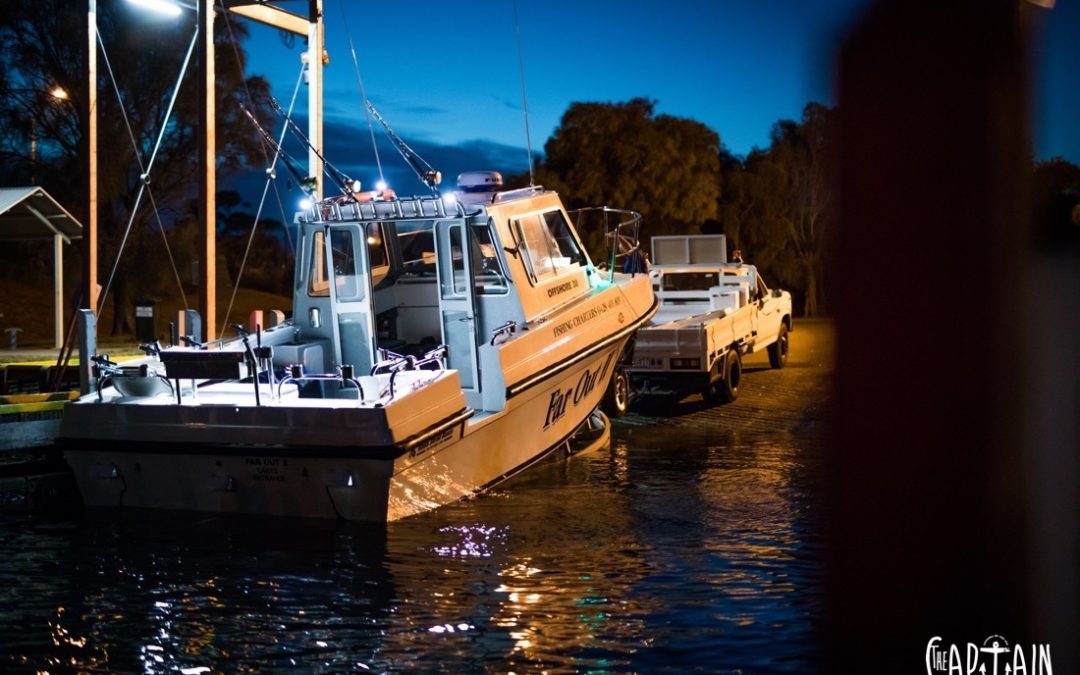
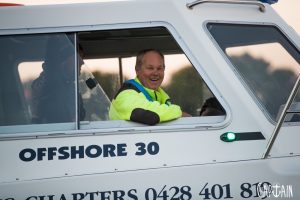
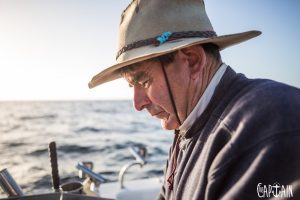

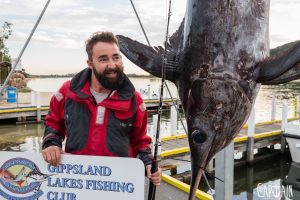
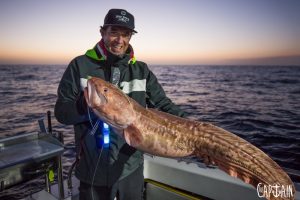
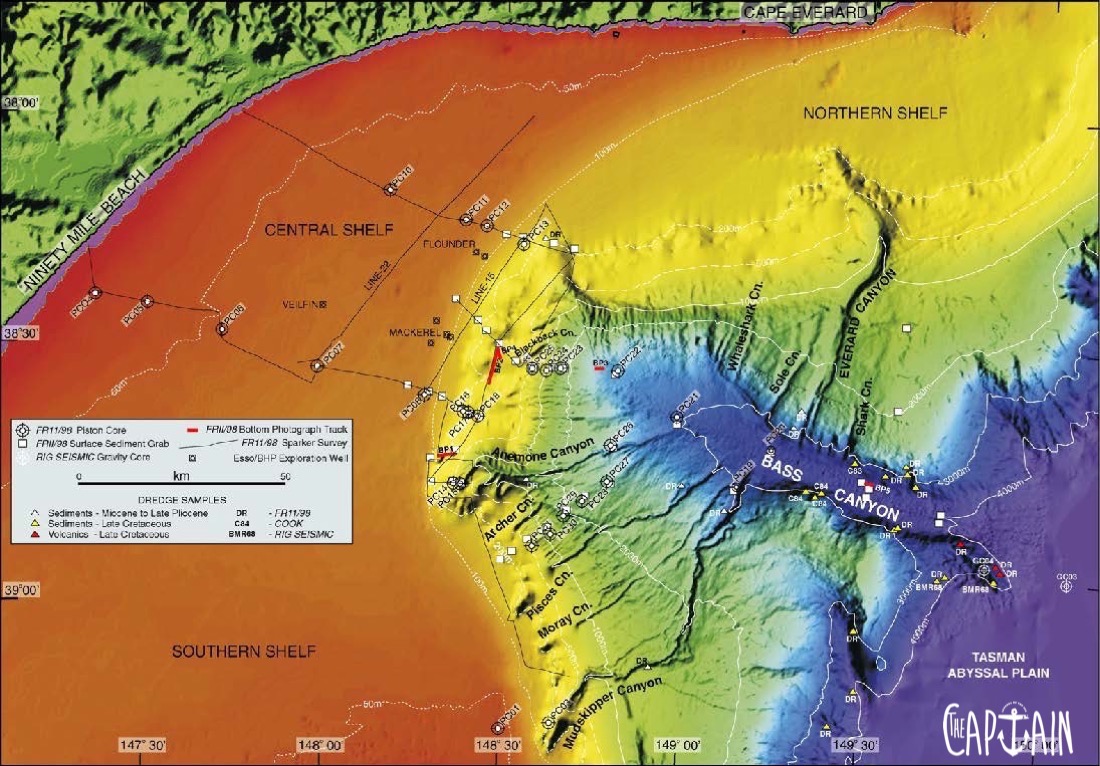
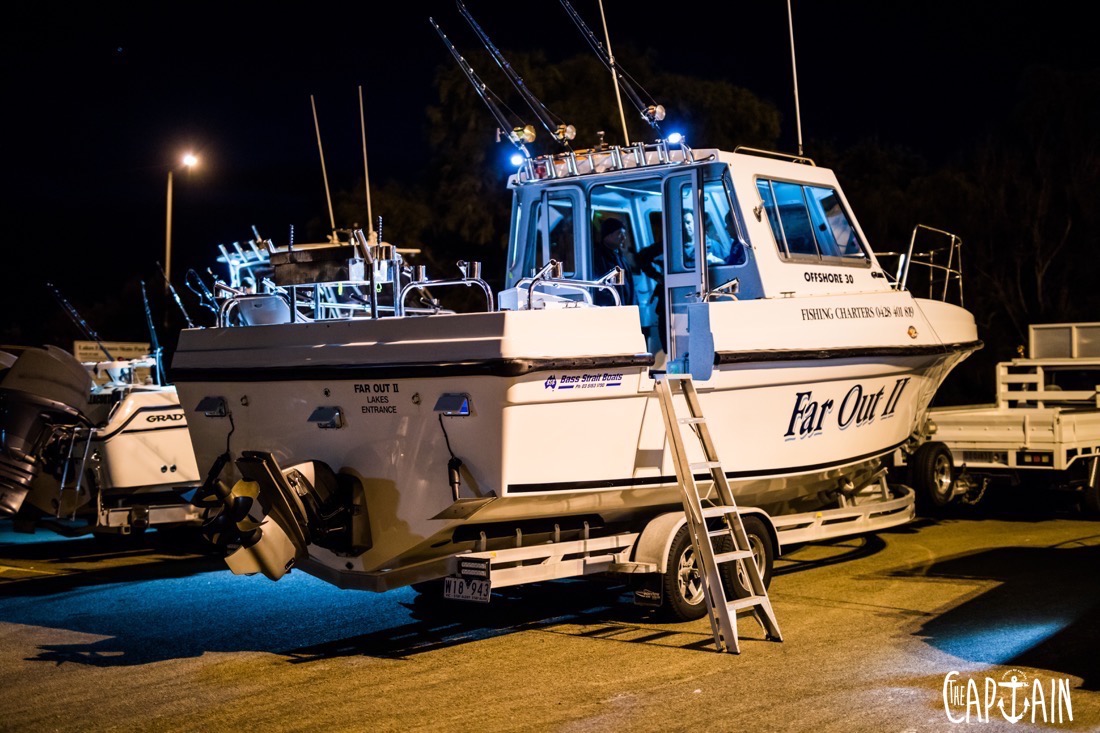


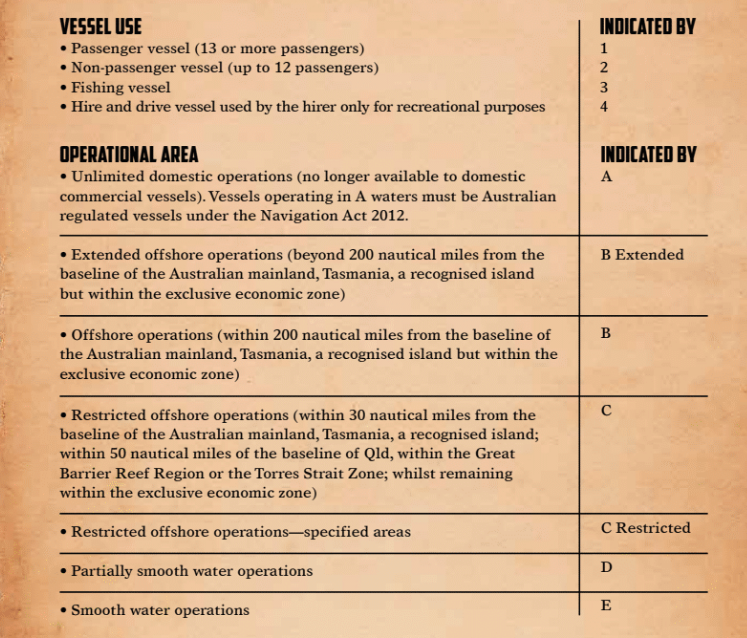
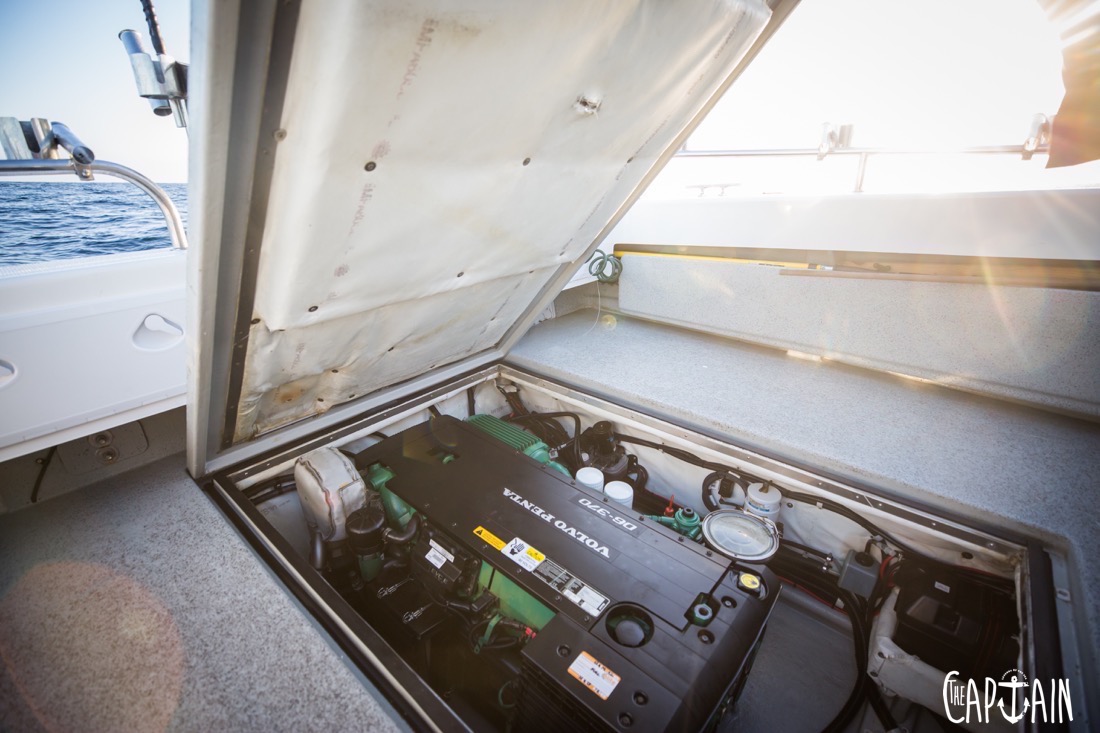
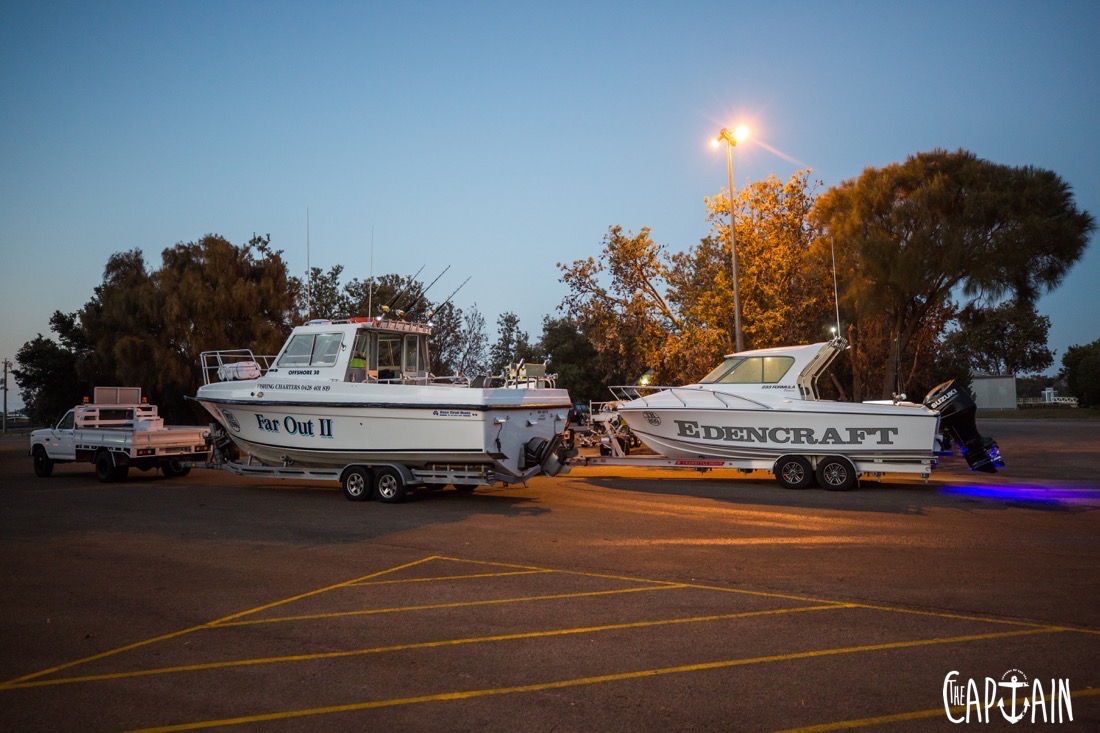


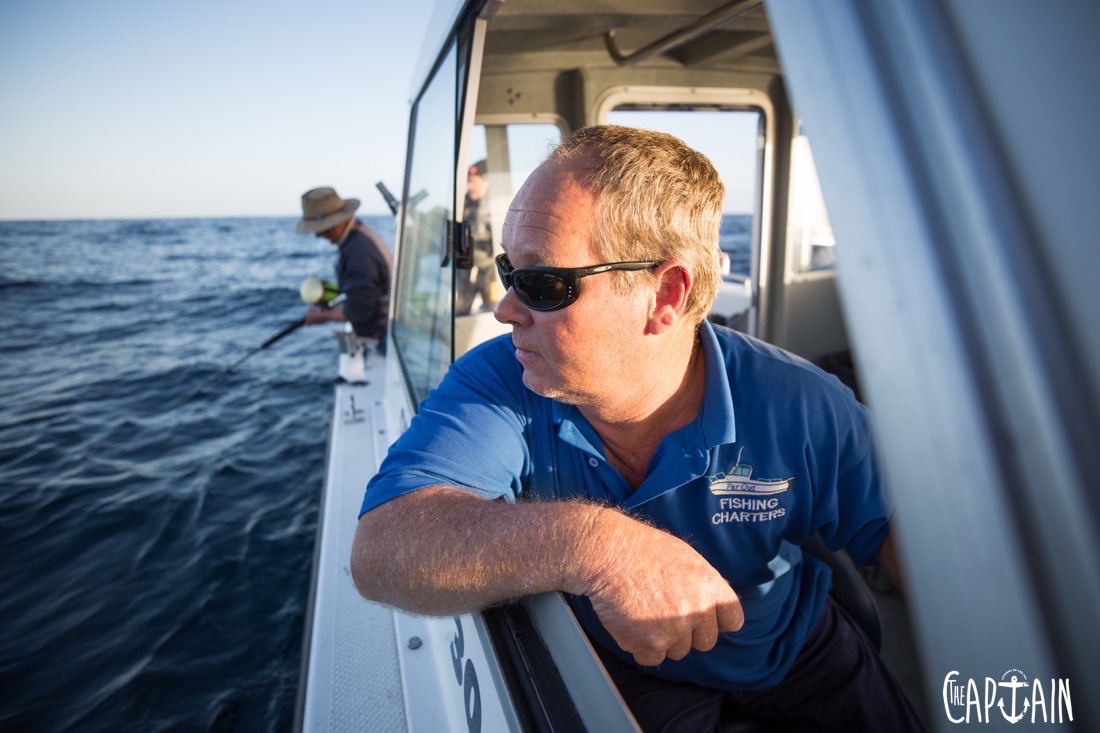




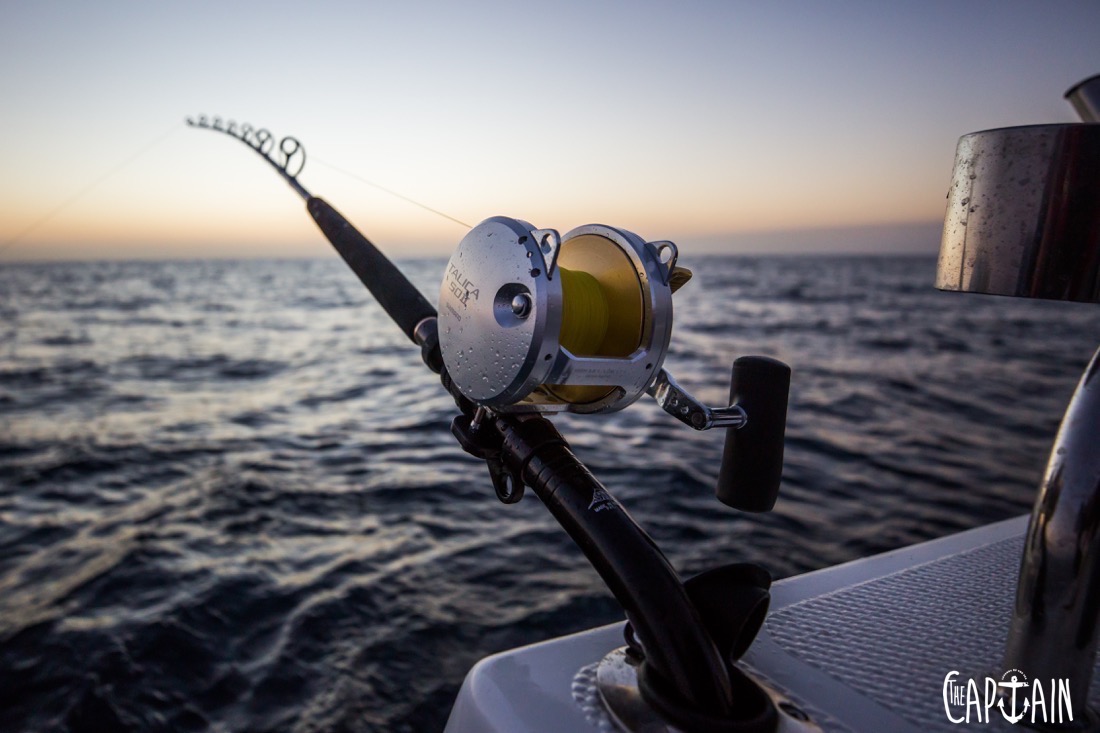
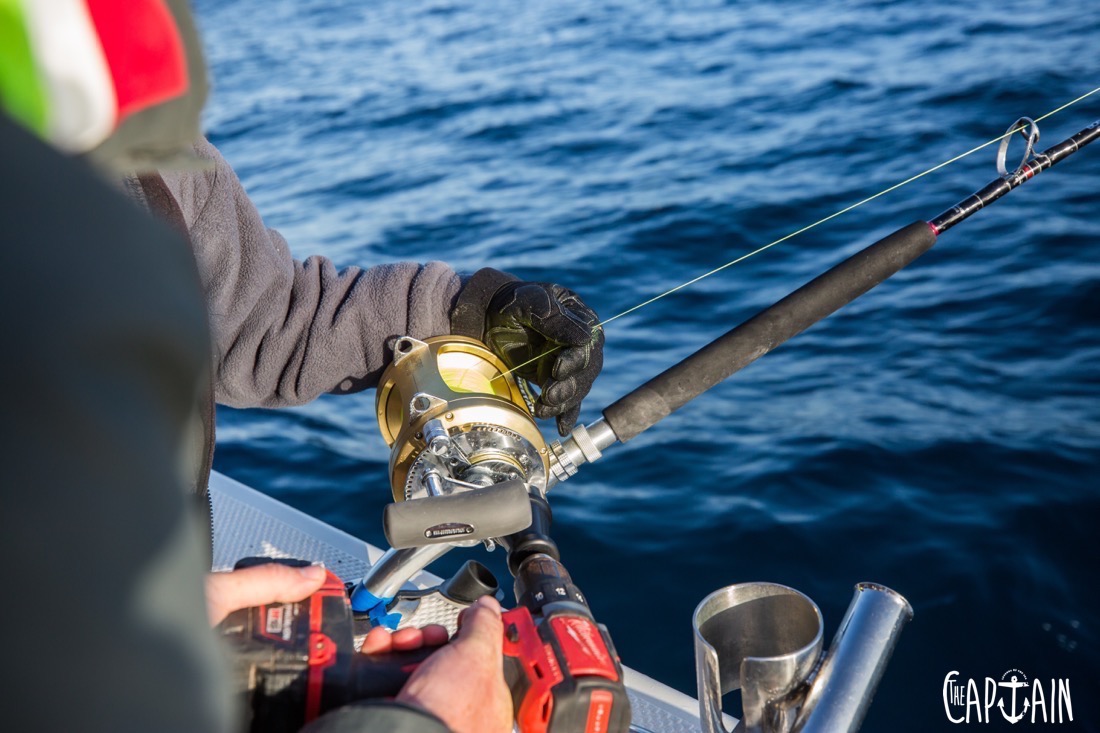
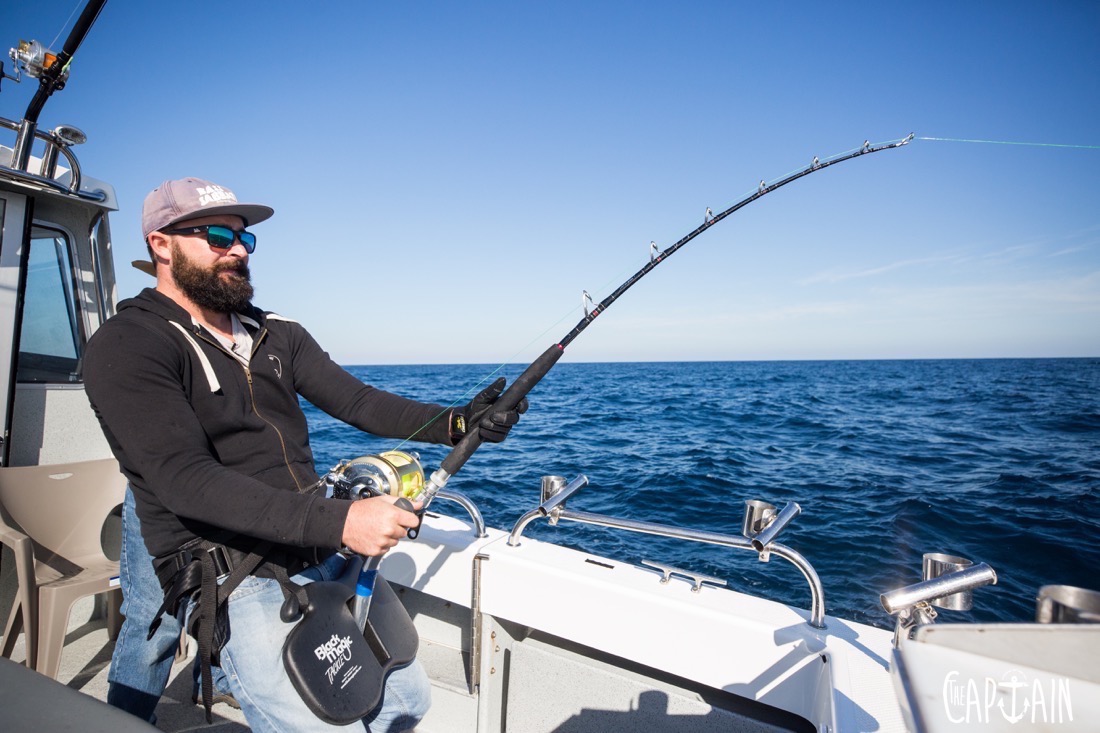
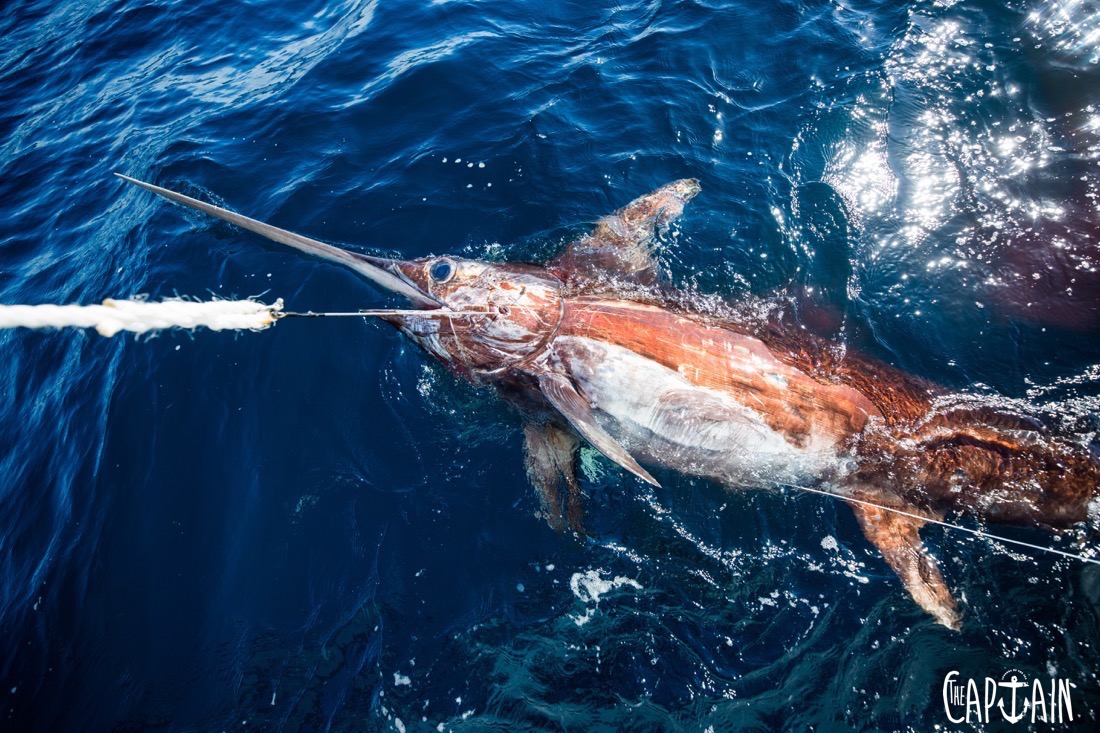
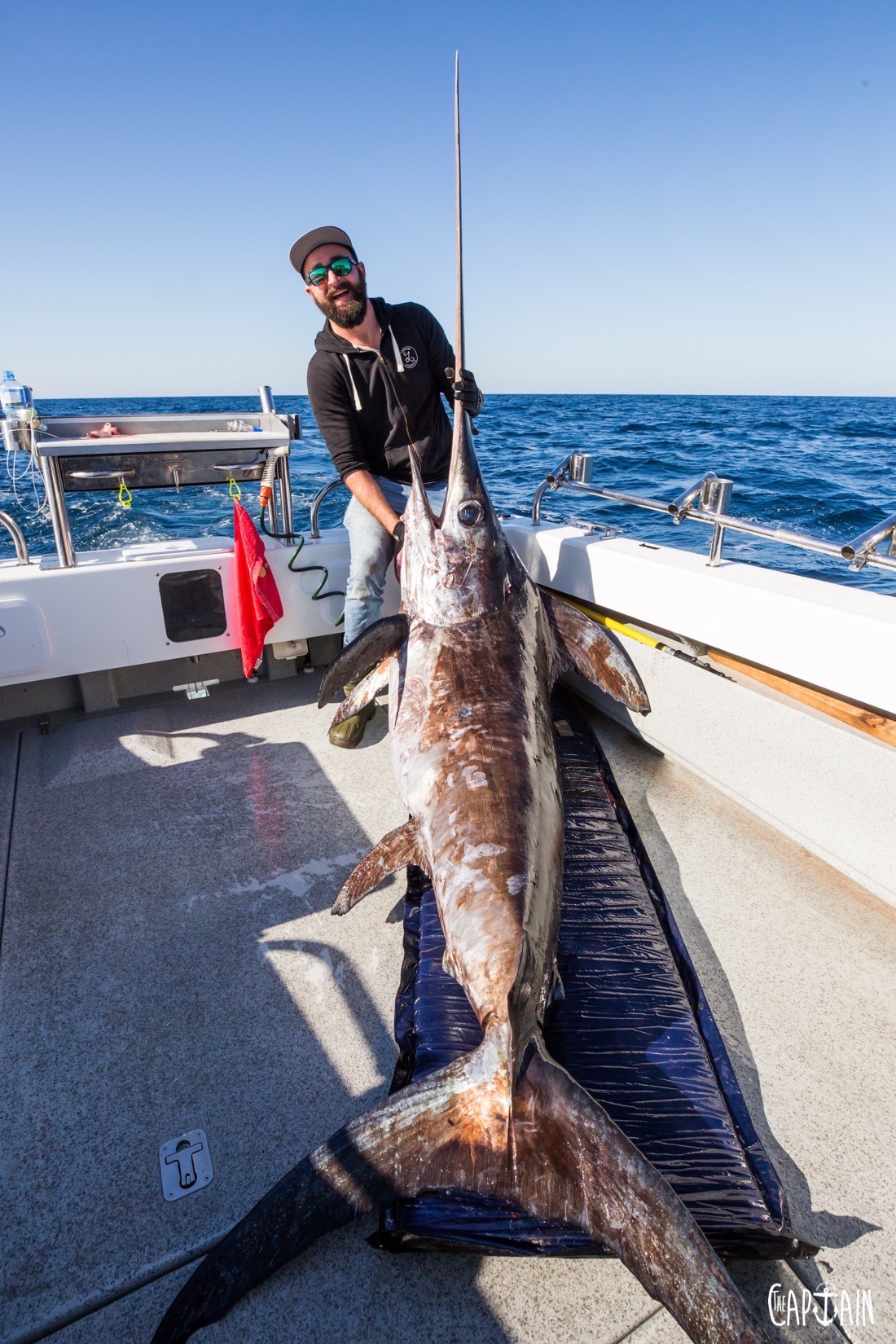
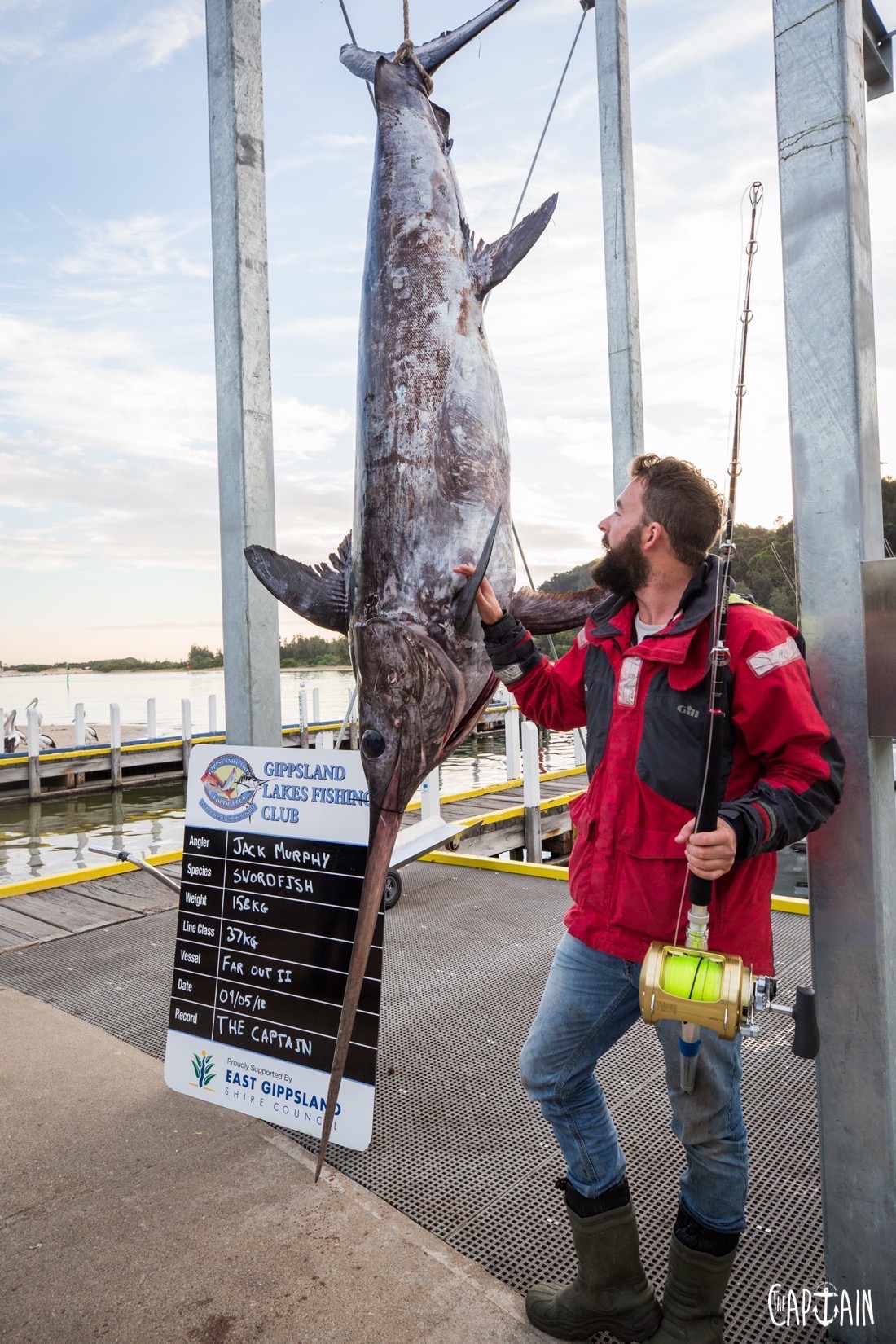

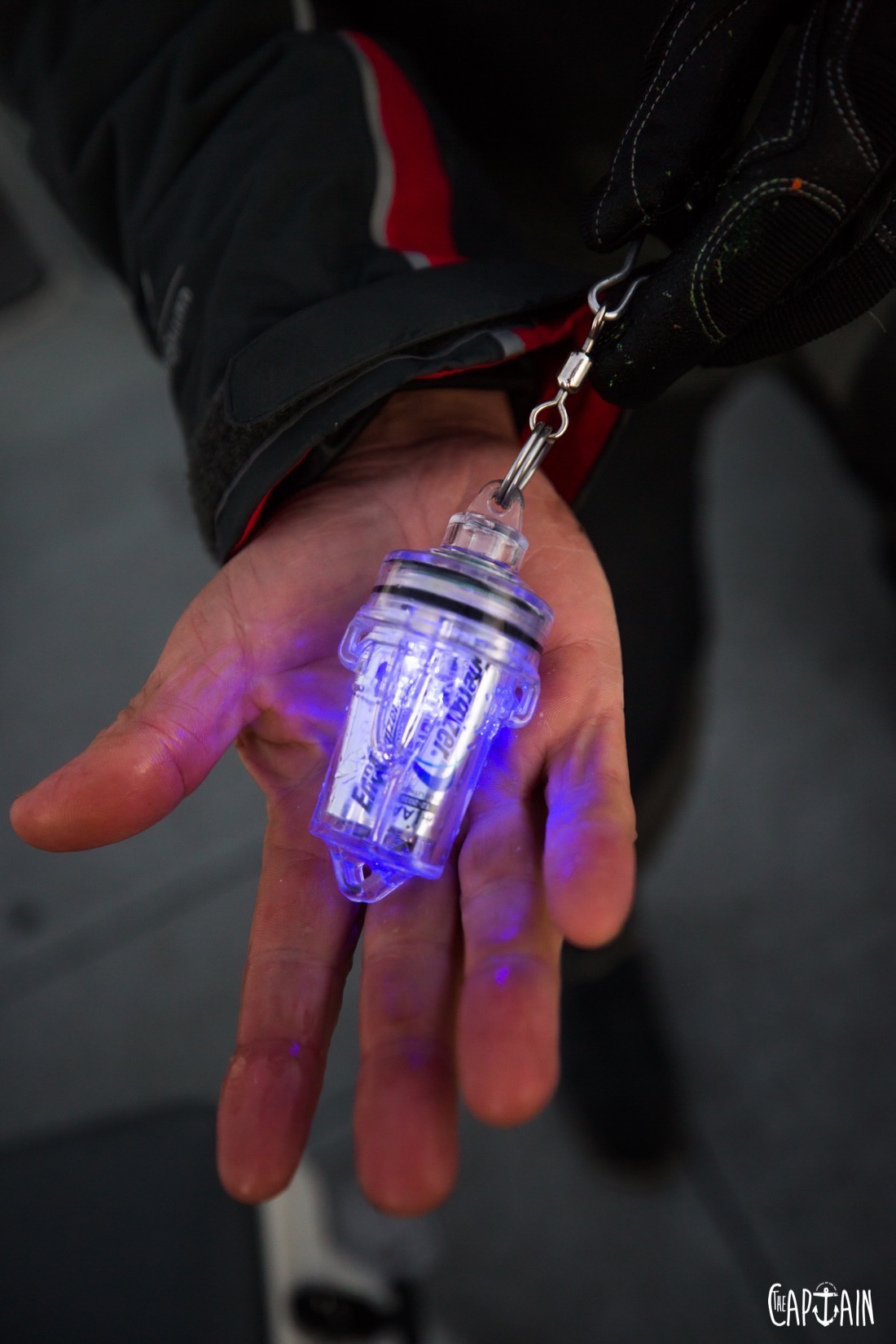
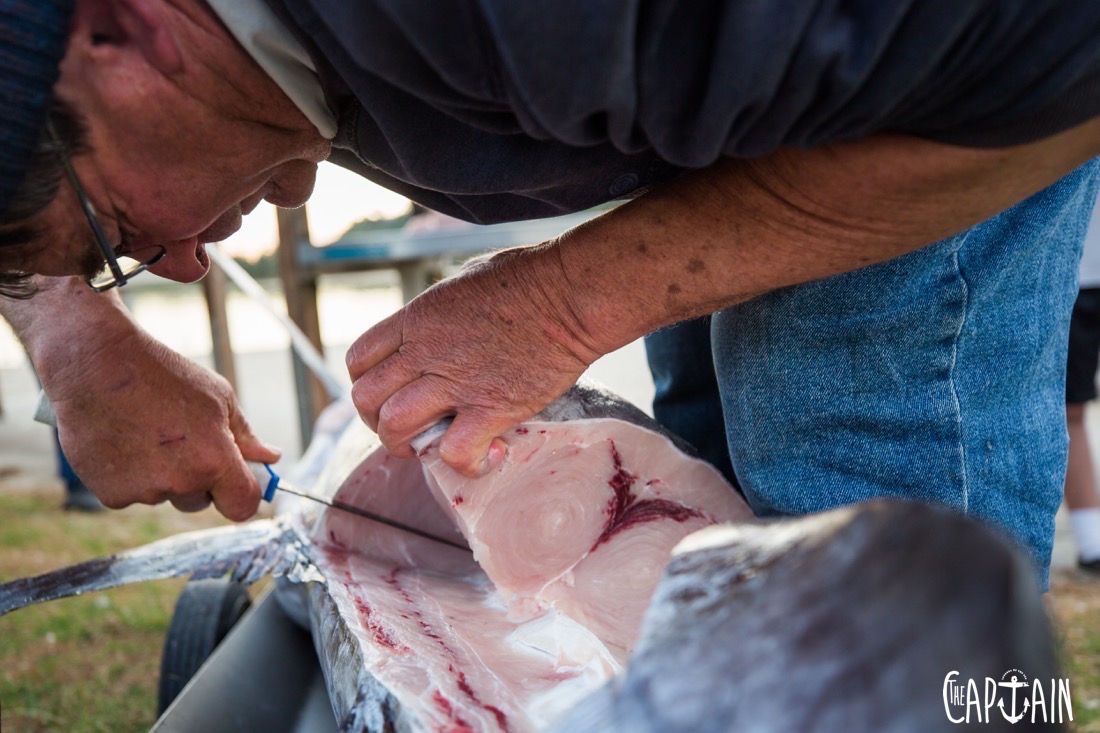
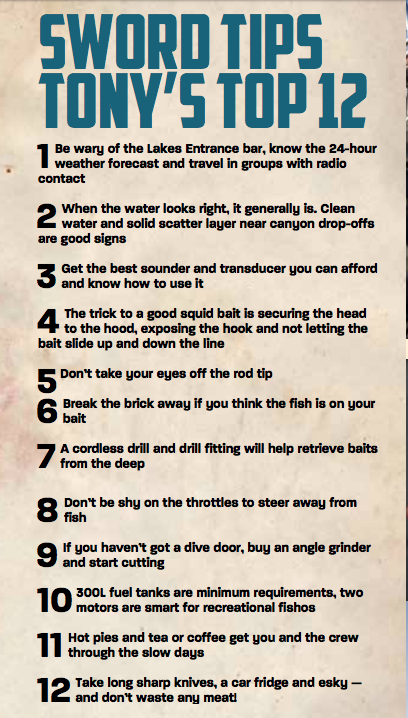

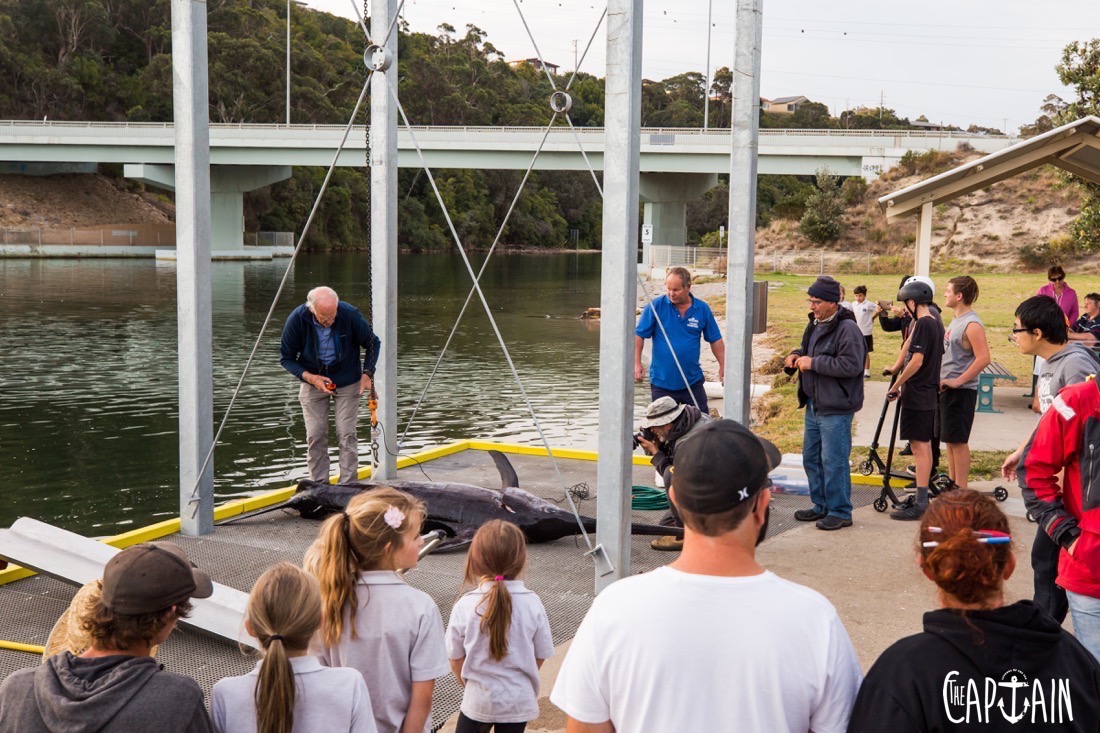






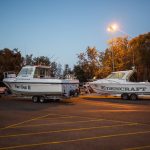
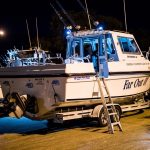
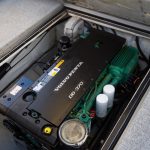
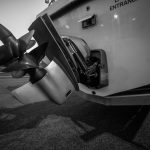
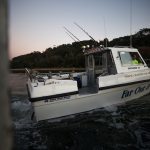
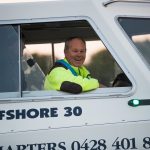
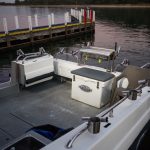

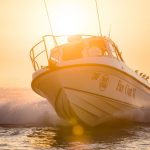
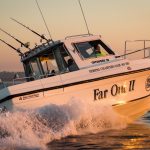
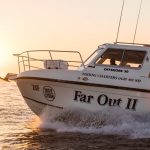
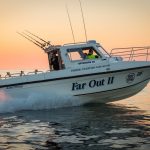
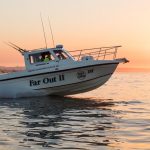
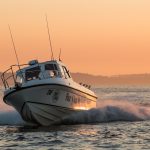
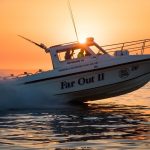
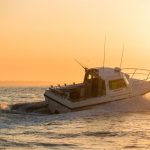

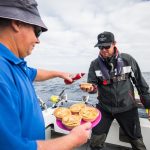
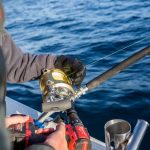
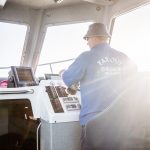
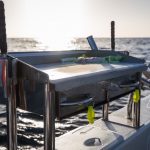
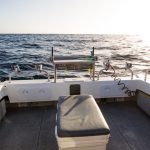
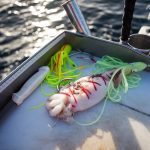
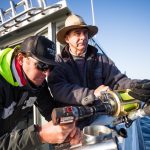
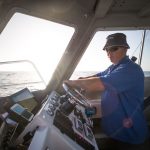
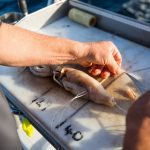
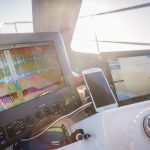
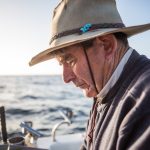

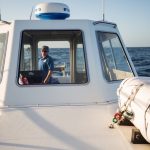
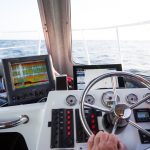
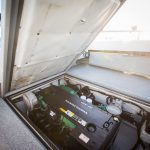
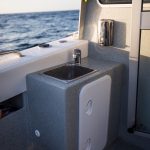
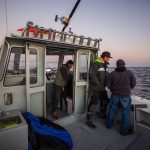
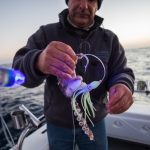
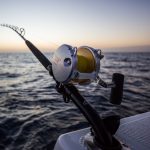
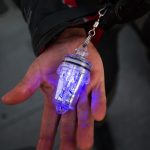
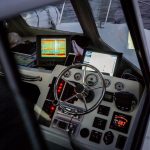
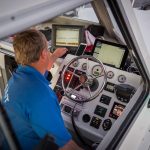
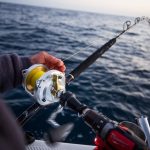
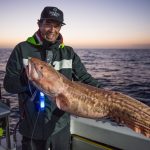
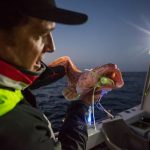

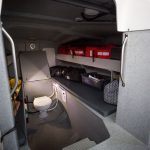
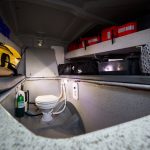
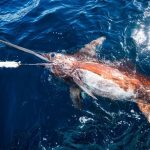
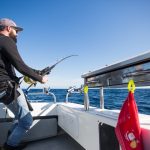
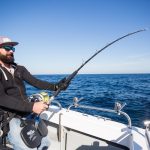
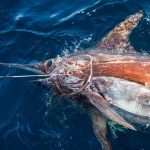
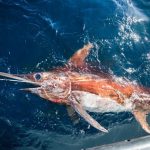
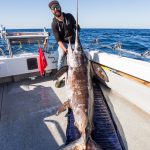
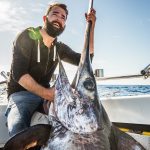
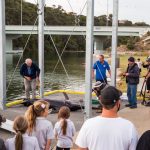
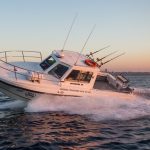
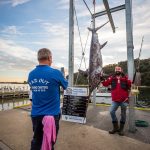
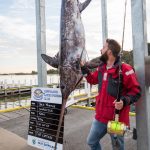
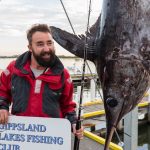
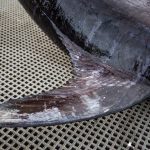
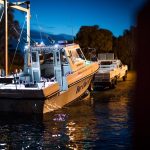
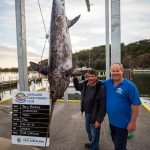
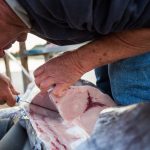
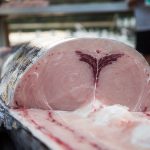
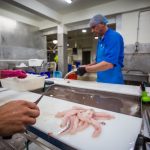

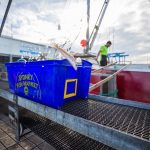
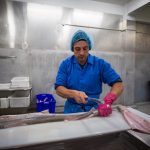
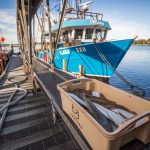
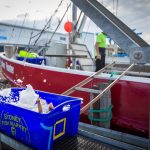


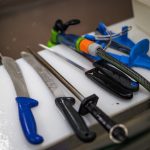
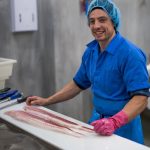

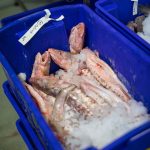

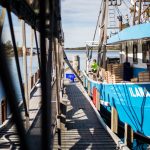

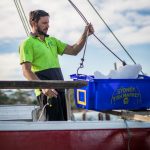
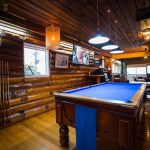

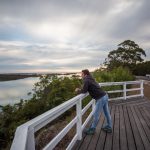
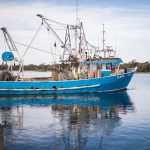


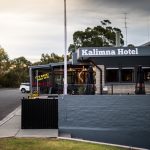



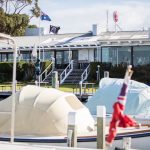

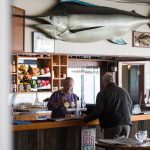
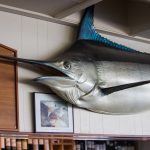
Recent Comments